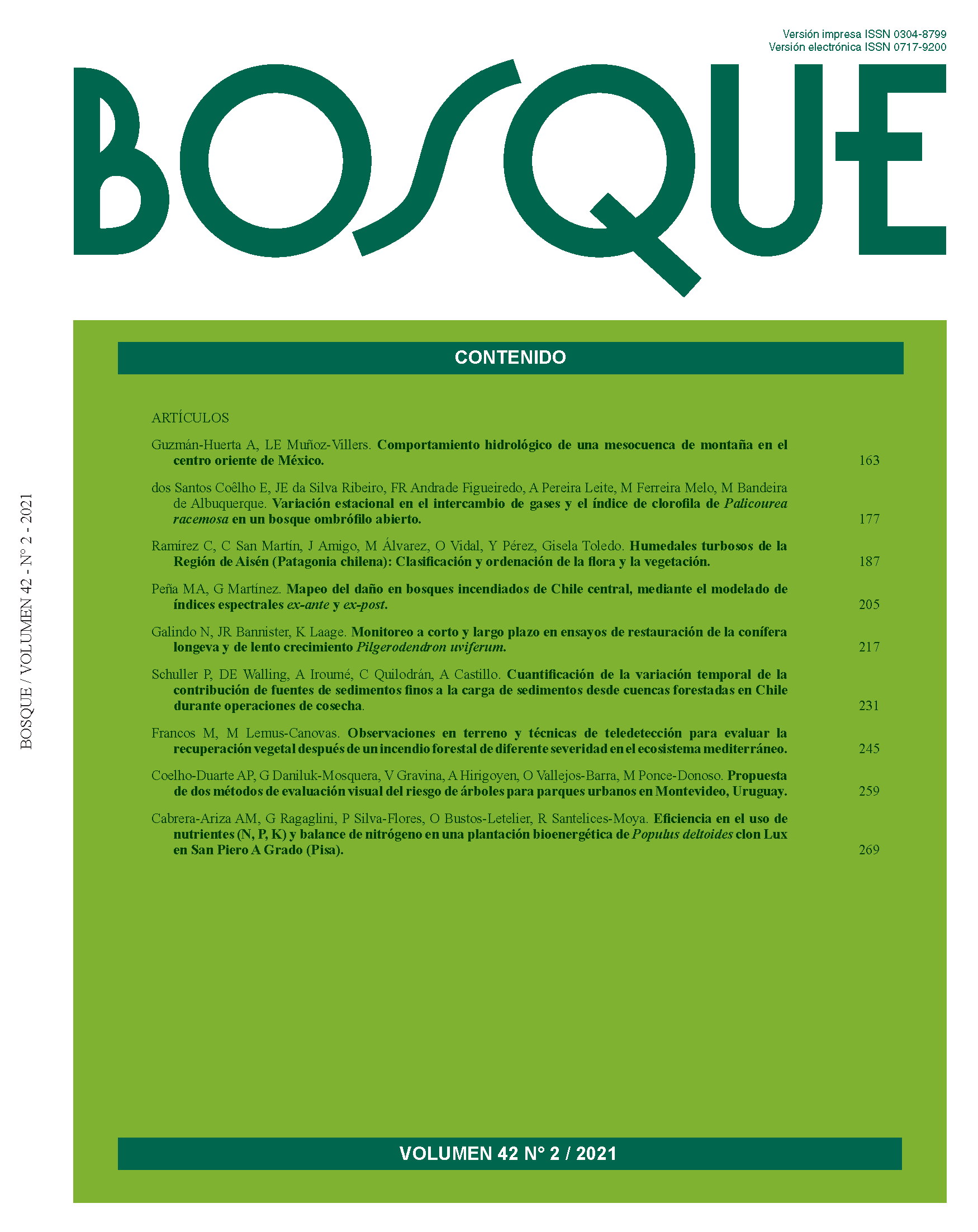Short-term and long-term monitoring in restoration trials of the long-lived and slow-growing conifer Pilgerodendron uviferum
Main Article Content
Abstract
Long-term monitoring is essential to understand responses to restoration actions in slow-growing species such as the native conifer Pilgerodendron uviferum. After catastrophic fires, most trees and seeds of this conifer were eliminated, limiting its natural recovery. The objective of this study was to analyze the implications of short-term and long-term monitoring on the interpretation of results in passive and active restoration experiments with Pilgerodendron uviferum in Chiloé Island. For 10 years, the processes of seed production and natural plant recruitment, and assisted regeneration through plantations of P. uviferum were evaluated in different microsite conditions in bogs, and light availability in sites with better drainage. The production of P. uviferum seeds was irregular and abundant every seven years (⁓200 seeds m-2). The natural regeneration after eight years increased by 80 %, especially in substrates with mosses and in association with Donatia fascicularis and Astelia pumilia. The abundance of natural regeneration was positively associated with older trees, the height and diameter of plants was favored by the protection of shrubs. In bogs, plants established on mounds reached higher levels of survival (78 %) and in sites with better drainage, survival was higher under canopy protection (100 %). Our results suggests that slow-growing species, such as P. uviferum, require long periods of monitoring to adequately interpret the results of restoration experiments in burned forests.

